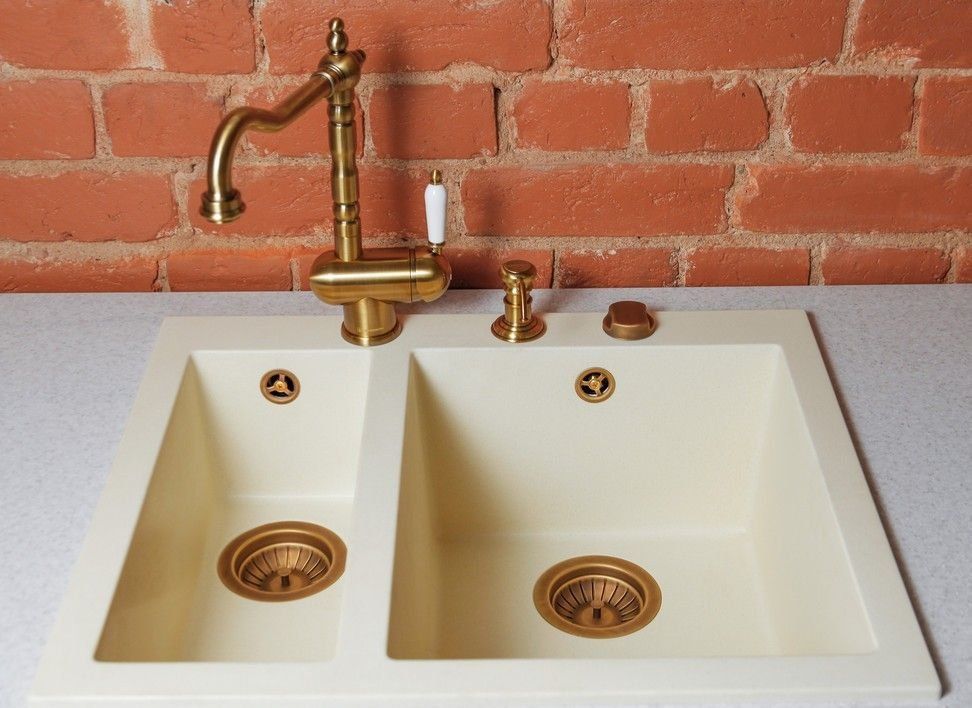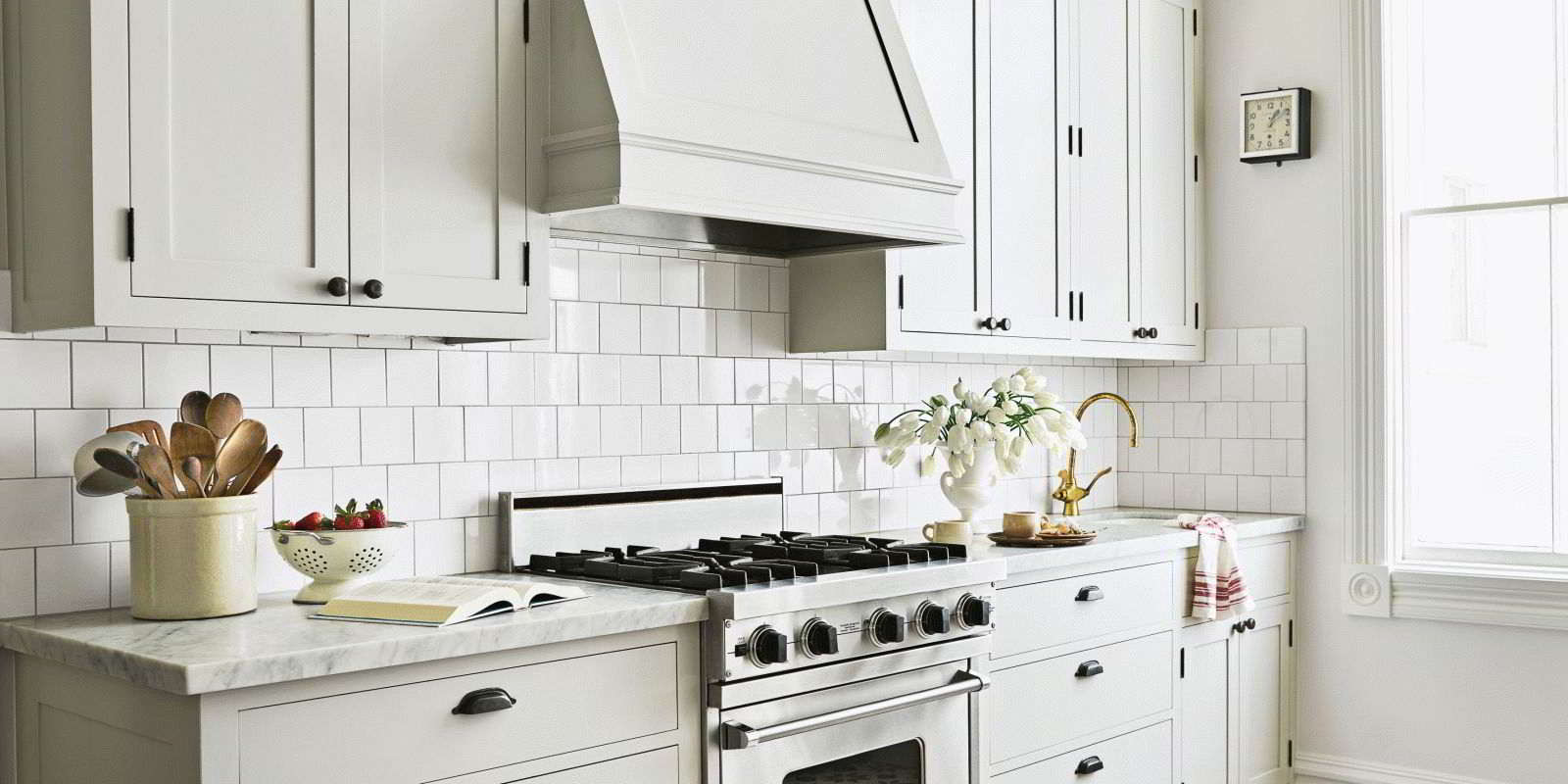Rating of the best aspirators (nozzle pumps) for newborns in 2022
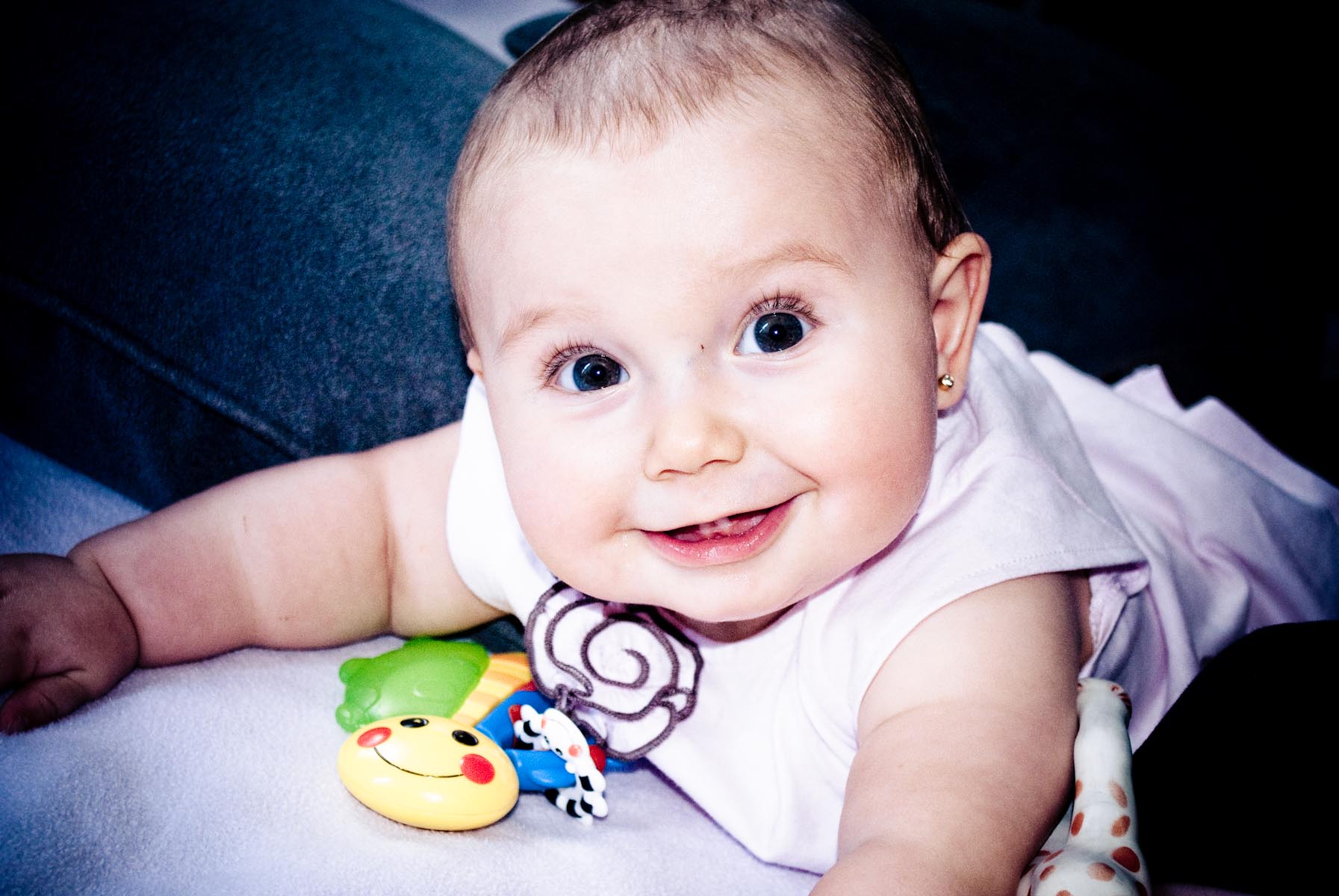
Young parents quite often face the problem of nasal congestion in their babies. It becomes difficult for the baby to breathe during breastfeeding, and he also experiences restless and disturbing sleep. A runny nose with colds causes a lot of trouble, in particular, it is necessary to clean the baby's nose from mucous secretions painlessly, and without harming the mucous membrane. To help this, aspirators, also called nozzle pumps, were invented.
There are many types of aspirators, but in order to use these devices less often, you need to try to prevent the appearance of a runny nose, for this they moisten the room with the help of special electronic humidifiers, or hang wet towels in the old fashioned way or put water containers, and in winter, put them closer to heat sources. Another way to reduce the frequency of a runny nose in a baby is to periodically rinse the nose with saline solutions. But if its appearance still could not be avoided, then you need to purchase an aspirator.We will find out what types they are and how to make the right choice, and also find out which are the best aspirators for babies in 2022 according to consumers.
Types of aspirators
Very young children cannot blow the mucus out of their nose on their own, so it is necessary to use additional devices - aspirators. According to their action, they can be divided into several groups: vacuum, electrical, mechanical, and as a separate type - a syringe.
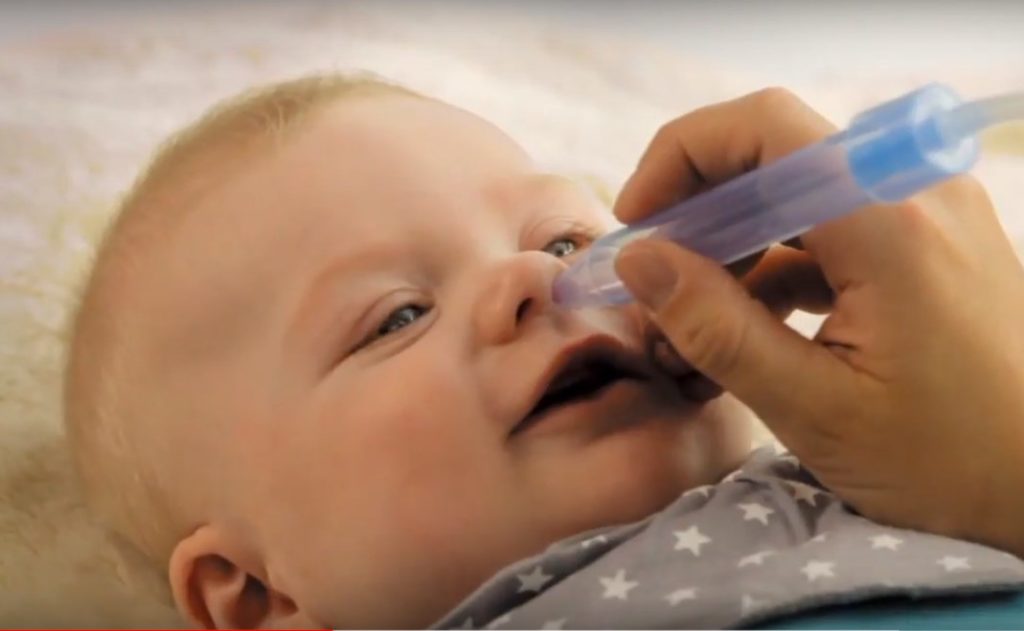
Vacuum
The main difference between the vacuum version and all other types is the mandatory use of a vacuum cleaner. One side of such a nozzle is inserted into the child's nose, and the other is connected to a vacuum cleaner. In most cases, the design of vacuum models is made in such a way as to lower the pressure, due to which the suction power of the mucus is automatically adjusted.
Electric
An electric aspirator has a number of advantages over a vacuum one in terms of autonomy. For example, at the moment of lack of light, in the country, in nature, or somewhere else far from civilization, the use of a vacuum cleaner will be extremely difficult.In turn, electric models powered by batteries can also fail during prolonged use, but still, their autonomy is higher than that of vacuum ones.
Mechanical
Mechanical nozzle pumps are considered leaders in terms of autonomy, but they are not always leaders in terms of efficiency. The principle of their work is to introduce one tip into the baby's nostril, and from the other side, the mucus is pulled out of the nose with the mouth.
Syringe
A syringe is a budget option for aspirators. For the most part, not high cost is also an indicator of poor efficiency. The market provides a huge range of syringes (pears) and this rating may help you make the right choice.
Postgraduate Rating
B.Well WC-150
votes 0
The B.Well WC-150 battery-powered electric nasal device will help remove mucus from the crumbs' nose quickly and painlessly. And in order to divert the child's attention from this unpleasant procedure, Japanese manufacturers have added 12 children's melodies to the memory of the device, which can be turned on when cleaning the nose. The device runs on two AA batteries. Time of continuous work - 45 minutes.
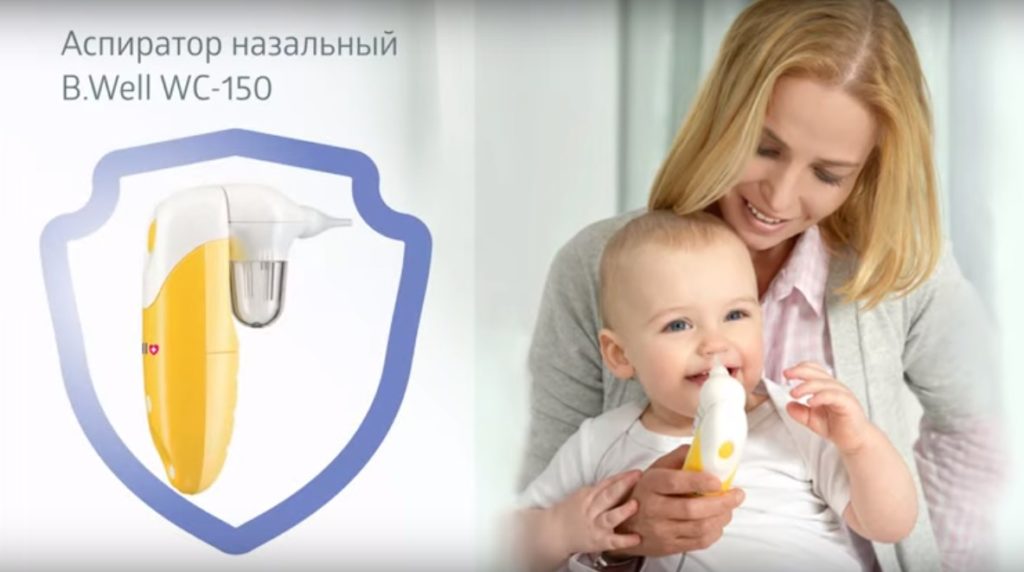
How does it work? The device is inserted into the nostril, then turned on, the extracted mucus is collected in a transparent container that comes with the aspirator. The container is easy to clean and disinfect, and a specially shaped soft nozzle prevents damage to the nasal mucosa.
- High quality workmanship and materials;
- There are 12 built-in melodies;
- 2 tips included.
- Runs on batteries.
Baby-Vac 19204
votes 0
Baby-Vac is a nasal vacuum device from a Hungarian manufacturer.It works on the principle of equipment that otorhinolaryngological departments are equipped with. True, instead of a vacuum pump, a conventional vacuum cleaner is used. The aspirator is equipped with two reusable silicone tips and can be used to facilitate breathing even for babies from the first days of life. The unique design is able to automatically lower the pressure and adjust the suction power.
- Ease of use;
- High efficiency;
- Easy to wash;
- It can be used for procedures for children and adults.
- High price;
- Dependence on a vacuum cleaner and electricity;
- Noisy.
Otrivin Baby
votes 0
With rhinitis and a runny nose in a child, a mechanical nasal nozzle pump Otrivin Baby, manufactured in Switzerland, can also be used. This is a budget option, however, this does not reduce the efficiency of its work, compared with the two previous leaders in the rating. It consists of three collapsible parts: the central part of the body, the mouthpiece and the tip.
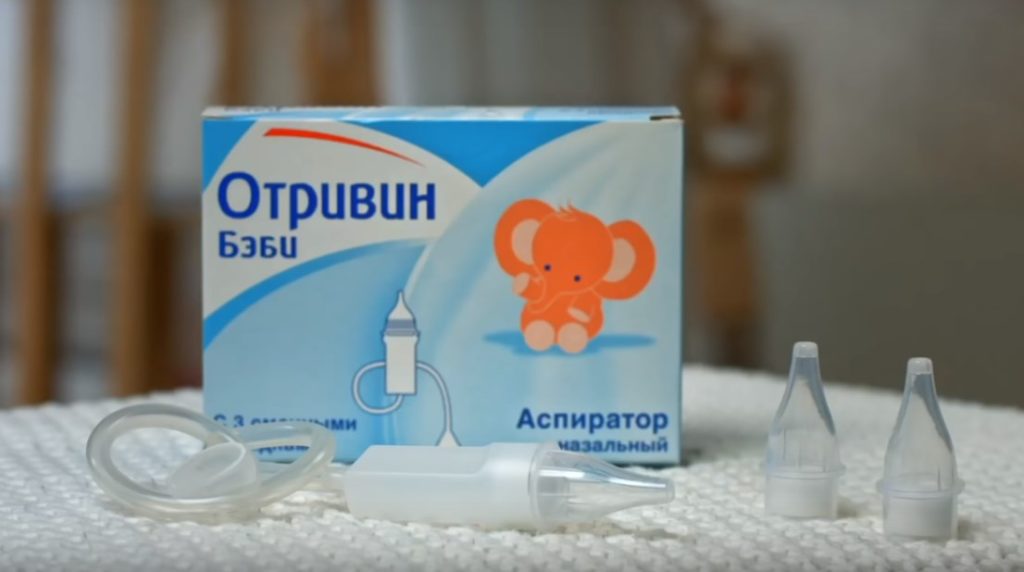
Principle of operation. Before use, use a saline solution to irrigate the nasal cavity. Then a tip is inserted into one nostril, and on the other hand, air is gently drawn in through the mouth through the mouthpiece. Then repeat the procedure with the second nasal passage, disconnect and discard the used tip.
- Good price;
- autonomy;
- Efficiency;
- Ease of use.
- The need for replacement nozzles.
Physiomer baby
votes 0
Physiomer baby is also included in the ranking of the best nozzle pumps for baby care. This is a self-contained mechanical device with a replaceable filter and a soft silicone tip.The principle of operation is quite simple: put the child on the back, drip saline into the nasal opening and insert a soft tip there. Gently inhale through the mouthpiece and repeat the same manipulations with the second nostril. Dispose of the filter and thoroughly wash and dry the device.
- Price;
- Ease of use;
- Autonomy.
- The need for replacement filters.
Marimer
votes 0
Nasal aspirator Marimer, made in France, consists of four main elements:
- Blue plastic case with a compartment for mucus, where the filter is installed;
- Transparent tip with a rounded nose;
- tubule;
- Mouthpiece.
The principle of operation is the same as that of the previous mechanical models from our list. Unlike some others, the body of the Marimer nozzle pump has recesses for the fingers on the sides, which ensures a strong fixation during the procedure.
- Not expensive;
- Effective;
- Autonomous;
- Reusable use.
- Rigid tip;
- Tight assembly.
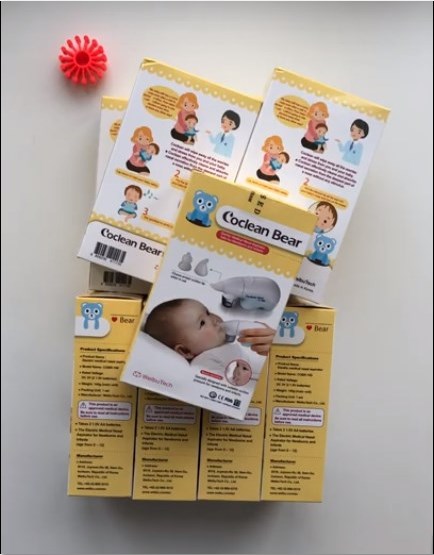
Coclean Bear
votes 0
The South Korean electronic aspirator Coclean Bear is used to clean the noses of babies from birth to a year. It is also used to prevent diseases of the nasal cavity of children. Outwardly, it resembles a bear, which distracts the child from this unpleasant procedure and allows it to be carried out more carefully, but at the same time quickly.
The Coclean Bear package includes the aspirator itself and a nozzle with two tips. Runs on AA batteries, no battery included.
- Effective;
- Easy to clean;
- Works continuously on batteries for about 50 minutes;
- Can be used from birth.
- Not waterproof;
- High price.
nosefrida
votes 0
The Nosefrida reusable mechanical nozzle was developed jointly by ENT specialists and pediatricians, and, in their opinion, is necessary for caring for the nasal cavity of a child, especially at an early age. Nosefrida is made in Sweden and meets all the requirements. It is a tube for collecting mucus with a tight-fitting lid, as well as a catheter and a red mouthpiece. After each use, thoroughly rinse the aspirator and use a new filter before the next use to prevent transmission of infection from the child to the mother.
- Low cost;
- Convenience and ease of use;
- Availability of replaceable filters;
- Autonomy.
- One nozzle.
Aqua Maris
votes 0
A mechanical nasal Spanish aspirator with 4 interchangeable nozzles is used to remove mucous secretions from the baby's nose. For best results, rinse with salt or sea water solution before use.
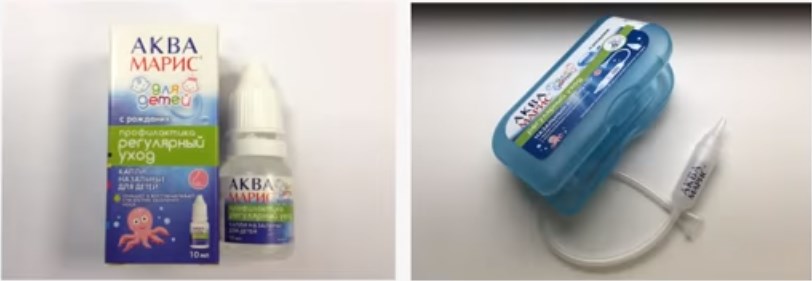
The kit consists of a hose, a mouthpiece, a directly transparent body of the suction pump, where excess mucus is collected, and 4 extra soft nozzles with filters. Suitable for regular use from birth. The method of application is the same as for other mechanical aspirators.
- Inexpensive;
- Comfortable;
- Effective;
- Autonomous;
- Convenient case.
- Wide nozzle tip;
- Disposable nozzles.
happy baby
votes 0
Upon purchase, the Happy Baby vacuum nasal nozzle pump kit includes a transparent body (which allows you to evaluate the effectiveness of the procedure), a rather long tube, and a soft silicone nozzle.Works using a vacuum cleaner and does not require additional filters. Easy to clean after use - disassembles into 4 parts.
- Ease of use;
- Quality materials;
- Easy to wash;
- Storage case;
- Can be used from birth.
- Powered by a vacuum cleaner;
- One nozzle.
Lubby Baby Care
votes 0
Baby Care is a budget mechanical aspirator made in Thailand. Before use, as stated in the instructions for the product, it is necessary to boil the disassembled nozzle pump for 3 minutes, but you should not do this, it will melt. This is a mistake in the instructions, although the aspirator itself is pretty good. The kit includes a silicone tube, a transparent drive and a tip made of polycarbonate. Due to the extended nose, the tip does not penetrate deep into the nasal opening.
- Effective;
- Autonomous;
- Can be used from birth
- Not high cost.
- Error in instructions;
- There are no additional attachments.
CS Medica KIDS CS-14
votes 0
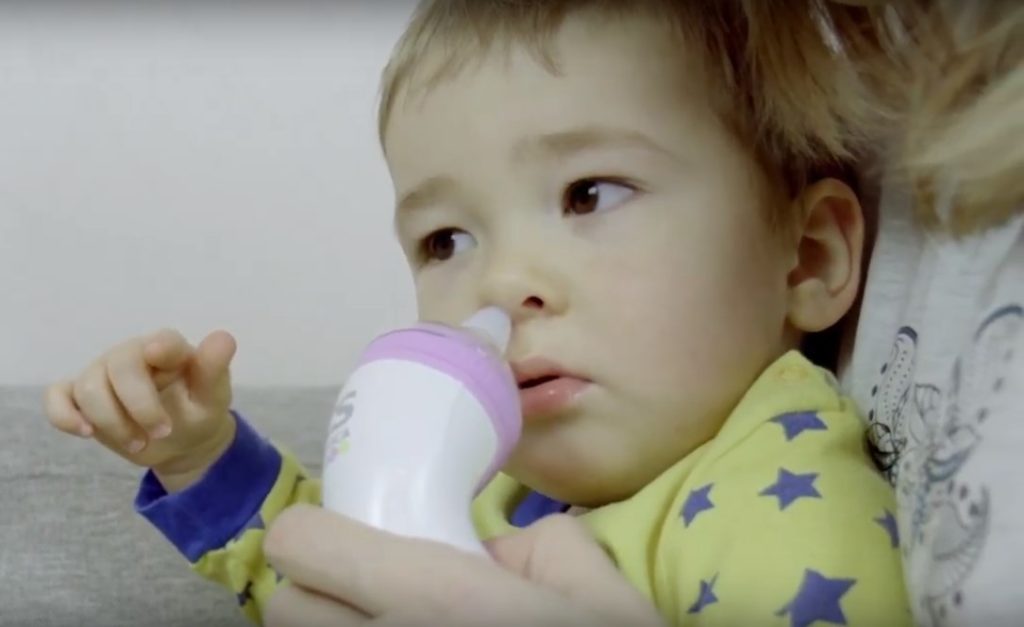
Electronic plastic nozzle pump CS Medica KIDS CS-14 is powered by two AA batteries. The kit also includes, in addition to batteries, 2 silicone nozzles: a wide one for removing solid secretions and a narrow one for more liquid ones. The weight of the product is 200 g, which is quite a bit with dimensions of 51x171x93 mm. Before carrying out the procedure for cleaning the baby's nose, it is necessary to soften the nasal secretion to a more liquid state. To do this, you can use NaCl 0.9% or other ready-made saline solutions sold in pharmacies. After use, the aspirator is easy to clean, and it is also possible to boil the spray chamber.
- Effective;
- Autonomous;
- Can be used for children from birth to 12 years;
- Not traumatic.
- No battery.
Douche Rating
Below is a rating of budget aspirator syringes (“pears”), among which there are also several that occupy leading positions in the opinion of consumers.
Alpina
votes 0
The Alpina syringe with a polypropylene tip is designed to remove mucous secretions from the child's nose. The time of use of the nozzle pump should not exceed 30 minutes. Before use, boil for 10-15 minutes in distilled water or immerse in a solution of 3% chloramine or hydrogen peroxide. The tip of the aspirator-syringe is made taking into account the anatomical features of the child's nose, therefore it is absolutely safe.
- Price;
- Efficiency;
- Ease of cleaning;
- Does not contain phthalates.
- glass tip;
- There are no additional attachments.
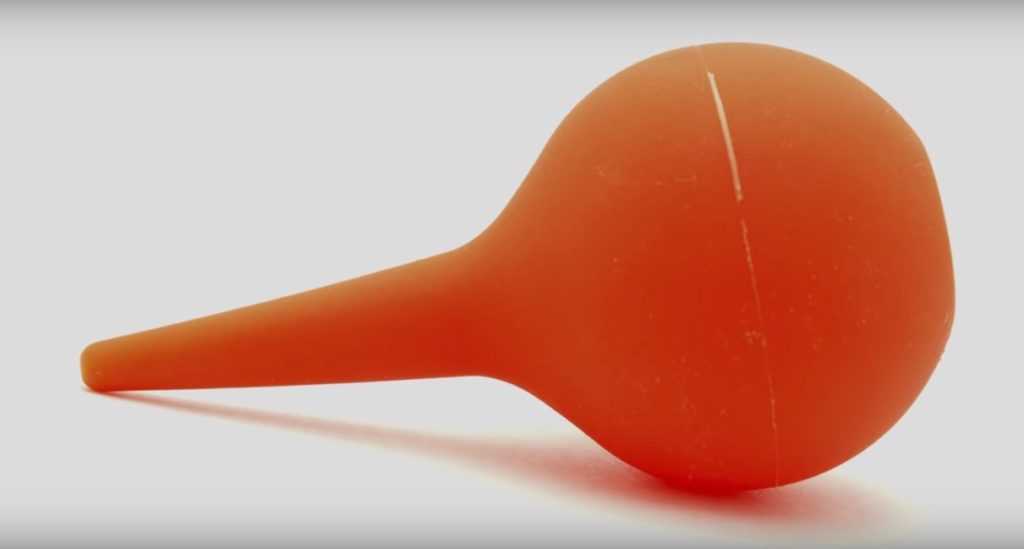
happy baby
votes 0
The Happy Baby aspirator is designed to separate nasal mucus from a baby's nose. Made from safe materials and can be used from birth. The pear is made of soft materials: rubber, silicone and polypropylene. Shelf life is 5 years from the date of manufacture and 1 year from the date of use. After use, wash with warm soapy water, but do not boil.
- Not traumatic;
- Price;
- Bright yellow body.
- Little effective;
- No nozzles;
- Difficult to clean after use.
Babyono
votes 0
The Babyono silicone syringe aspirator is made of soft materials that are safe for the baby. The peculiarity of this model is the presence of a special cover that closes the aspirator tip during storage.This prevents bacteria from getting inside the syringe, and as a result, reduces the risk of infection of the child.
- Price;
- Hygienic lid;
- Removable tip.
- Weakly effective;
- There are no additional attachments.
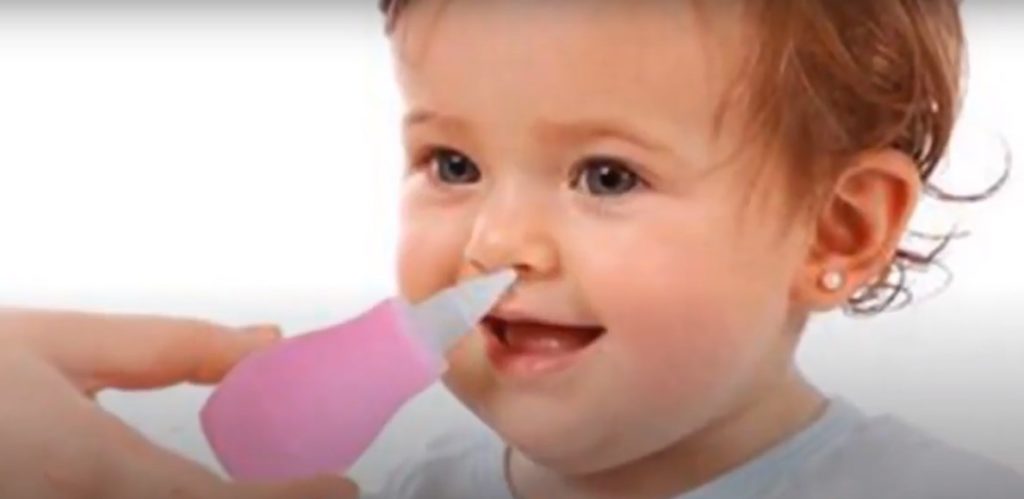
Chicco
votes 0
A syringe (pear) allows you to quickly and painlessly clear the baby's nasal passages, which will help the child breathe freely, eat and sleep peacefully. Made of flexible, soft materials with two silicone tips. Must be disinfected before use. How to use: squeeze the syringe and insert the tip into the child's nostril, then close the free nostril and slowly and gently release the aspirator.
- Price;
- Good quality material.
- Little effective.
Lubby
votes 0
The Lubby aspirator-syringe allows you to clean the nose from secretions, while not injuring the mucous membrane. It can be used from the first days of a child's life. Before use and subsequently, after use, the syringe aspirator is easy to clean and disinfect. Made from rubber and plastic.
- Price;
- Easy to wash.
- Ineffective.
Conclusion
When buying syringes, you need to pay attention to the shape and material from which the tip is made. The presence of a limiter is mandatory, and the tip of the “pear” must be soft and without sharp corners in order to avoid damage to the mucous membrane of the child. Another important indicator is the number of nozzles and their diameter. Some manufacturers provide additional features, such as built-in melodies.Also, do not lose sight of the age restrictions.
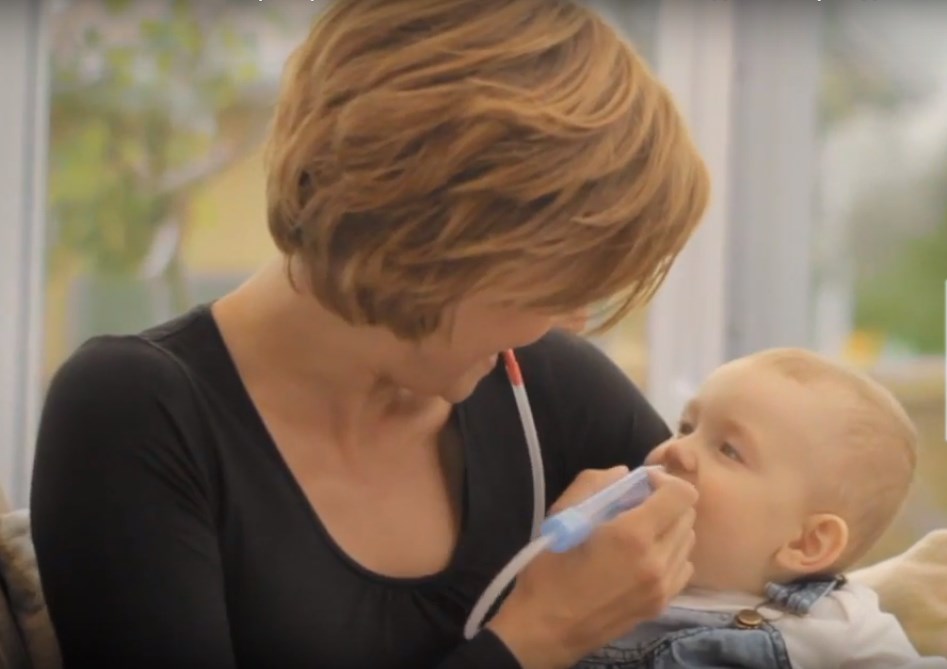
comparison table
| Model | Country of origin | The weight | Number of nozzles | Power type | Price |
|---|---|---|---|---|---|
| B. Well | Japan | 250 gr | 2 | Batteries | from 1 305 to 2 150 r |
| Baby-Vac 19204 | Hungary | 110 gr | 2 | Vacuum | from 1,203 to 1,990 rubles |
| Otrivin Baby | Switzerland | 34 gr | 3 | Mechanical | from 93 to 244 r |
| Physiomer baby | France | 63.5 gr | 1 | Mechanical | from 202 to 360 r |
| Marimer | France | 99.8 gr | 1 | Mechanical | from 190 to 300 r |
| Coclean Bear | South Korea | 145 gr | 2 | Batteries | from 2 900 to 3 600 r |
| nosefrida | Sweden | 59 gr | 1 | Mechanical | from 490 to 884 r |
| Aqua Maris | Spain | 85 gr | 4 | Mechanical | from 144 to 377 r |
| happy baby | Russia | 77 gr | 1 | Vacuum | from 242 to 599 r |
| Lubby | Thailand | 45 gr | 1 | Mechanical | from 109 to 163 r |
| CS Medica KIDS CS-14 | China | 200 gr | 2 | Batteries | from 1300 to 2050 r |
| Alpina | Russia | 40 gr | - | - | 173 r |
| happy baby | Russia | 47 gr | - | - | 165 r |
| Babyono | Poland | 54 gr | - | - | 153 r |
| Chicco | Italy | 49 gr | - | - | 250 r |
| Lubby | Thailand | 50 gr | - | - | 155 r |
new entries
Categories
Useful
Popular Articles
-

Top ranking of the best and cheapest scooters up to 50cc in 2022
Views: 131649 -

Rating of the best soundproofing materials for an apartment in 2022
Views: 127688 -

Rating of cheap analogues of expensive medicines for flu and colds for 2022
Views: 124517 -

The best men's sneakers in 2022
Views: 124031 -

The Best Complex Vitamins in 2022
Views: 121937 -

Top ranking of the best smartwatches 2022 - price-quality ratio
Views: 114978 -

The best paint for gray hair - top rating 2022
Views: 113393 -

Ranking of the best wood paints for interior work in 2022
Views: 110318 -

Rating of the best spinning reels in 2022
Views: 105327 -

Ranking of the best sex dolls for men for 2022
Views: 104363 -

Ranking of the best action cameras from China in 2022
Views: 102214 -

The most effective calcium preparations for adults and children in 2022
Views: 102010
